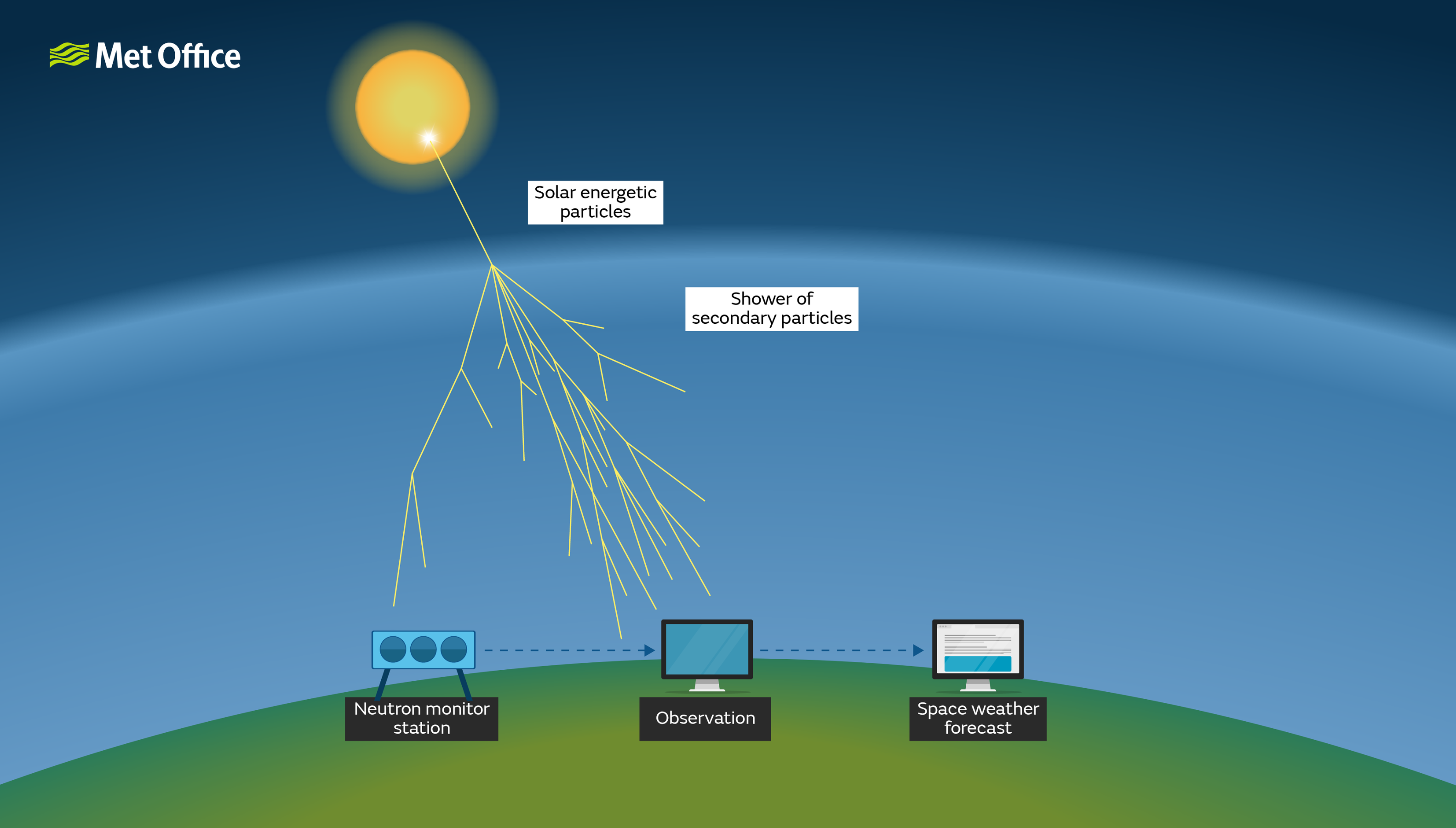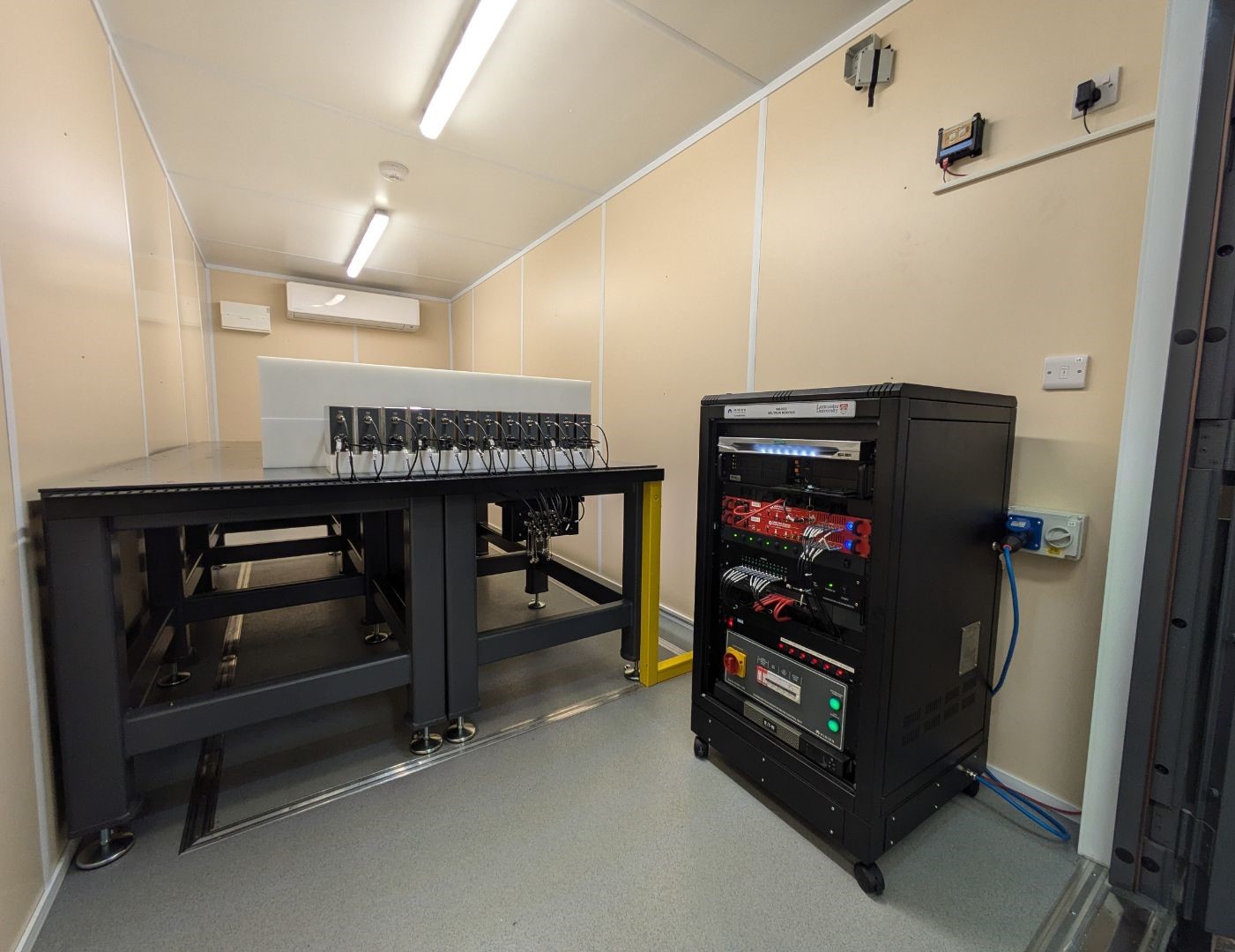The Met Office Space Weather Operations Centre (MOSWOC) has been monitoring the Sun’s activity for over ten years, but how exactly is space weather observed on the Earth’s surface? And what role does the UK have in this global monitoring network?

Space weather forecasting chiefly uses satellites to monitor the Sun’s activity and forecast events that could reach the Earth and cause impacts. These satellites include those that are always looking at the Sun, but also some that monitor particles in space as charged particles and matter from the Sun as it gets closer to our atmosphere.
The impacts from space weather can often be felt on the Earth's surface, including GPS and radio signals, as well as some ground-based infrastructure.
In order to fully understand how space weather interacts with the Earth’s surface, a global neutron monitoring network is in operation, continually monitoring changes in neutrons before, during and after space weather events.
For the first time in over 40 years, the UK now also contributes to this global monitoring network, with a newly installed ground-based neutron monitor in-situ at a Met Office site in Cornwall.
The project also includes a smaller monitor to be based in Lancaster, funded by the UK Science and Technologies Facilities Council under the Space Weather Instrumentation, Measurement, Modelling and Risk (SWIMMR) programme, which aims to improve the UK’s capabilities in space weather monitoring and prediction with a series of projects.
The neutron monitor is a new design and is the first in the UK in over 40 years and will join an international network of around 45 similar sensors on Earth that are continually monitoring changes in neutrons at the Earth’s surface to assess the influence of space weather.
The monitor will be chiefly looking for spikes in neutrons, called Ground Level Enhancements (GLE), which occur during solar radiation storms that are caused by the acceleration of particles close to the Sun. The new monitoring capability will enable alerts to be issued and validate existing forecasting methods of solar radiation storms.

The ground-based neutron monitor will continually be monitoring changes in neutrons at the Earth's surface.
Met Office Space Weather Manager Simon Machin said: “The new UK-based neutron monitor will enhance global monitoring of space weather events and will be an important part of our ongoing space weather forecasting and validating service.
“While severe space weather events are rare, this increased capability and resilience will help scientists and industries to manage risks and mitigate impacts where possible.”
The most severe solar radiation storms have the potential to impact aviation, satellites, spacecraft and even some ground-based electronics and can arrive to Earth from the Sun in as little as ten minutes. Enhanced ground-based monitoring can help to understand and mitigate impacts.
Professor Ian McCrea, SWIMMR Senior Programme Manager at STFC RAL Space, said: “This new monitor will be welcomed by experts across the space weather community, including here at RAL Space. The monitor will support the SWIMMR programme’s goals to advance the UK’s space weather monitoring and prediction capabilities.
“The UK hasn’t hosted one of these monitors since the 1980s, and having access to its measurements will provide essential validation for the radiation modelling and airborne sensor capabilities being developed elsewhere in the SWIMMR programme.”
The ground-based neutron monitor was developed and built by Lancaster University, in collaboration with UK Atomic Energy Authority (UKAEA) and Mirion Technologies (Canberra UK) Ltd and was tested on the ChipIr beamline at STFC’s ISIS neutron and muon source.
Dr Michael Aspinall, Principal Investigator at the School of Engineering at Lancaster University, said: “This project marks a major milestone for the UK in advancing our space weather monitoring capabilities—something crucial for safeguarding modern infrastructure and daily life.
“Bringing this neutron monitor online in collaboration with the Met Office and other international partners adopting our design strengthens global resilience to space weather risks by providing real-time data and new measurement capabilities. With our new design for an instrument that has not fundamentally changed in six decades, we’re not just building on the past—we’re setting new standards for the future of neutron monitoring.
“The NM-2023 introduces innovations that improve efficiency, sustainability, and affordability, all while delivering the critical data needed to better understand and mitigate the impacts of space weather."
10 years of MOSWOC
The new neutron monitor is the latest development that MOSWOC has contributed to since its inception around ten years ago.
Since its inception in 2014, MOSWOC has forecasted the arrival of thousands of space weather events, helping key industries to take steps to manage the risks posed by the Sun.
In addition to operational forecasting, MOSWOC plays an active role in the international scientific community for the advancement of space weather sciences, helping to develop capability around the world and advance scientific understanding. A recent Value Report suggested the Met Office’s space weather capability is worth £800million to the UK over the next decade.


